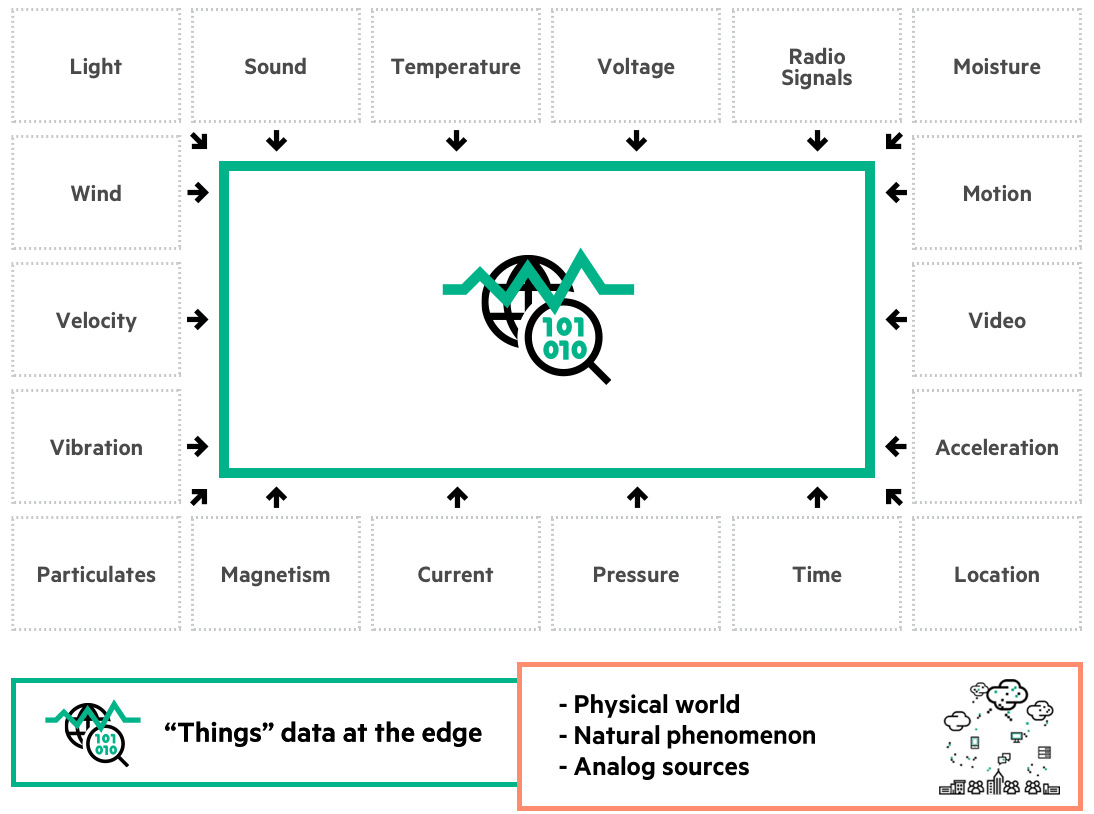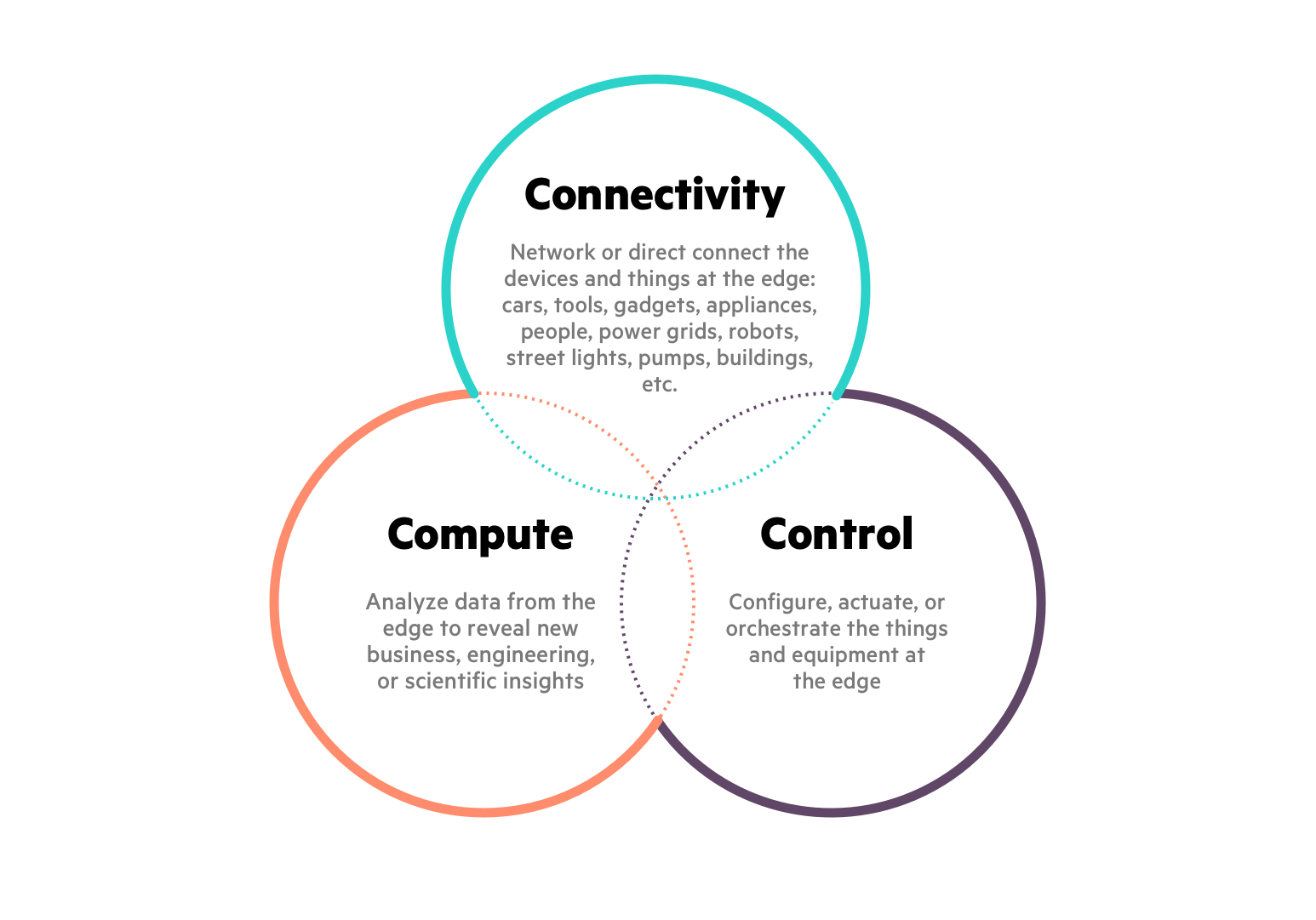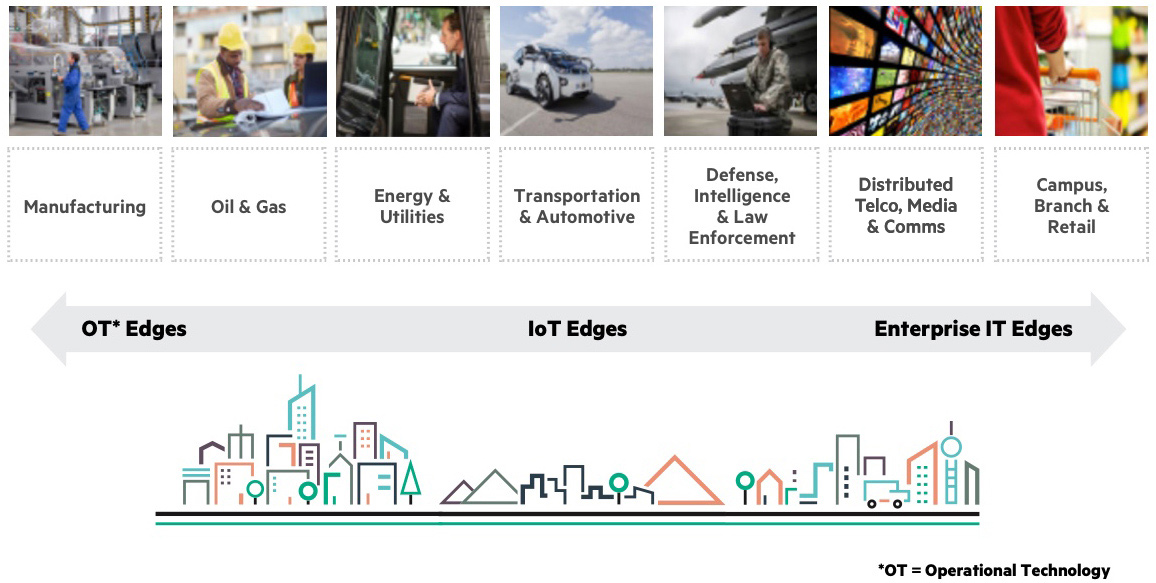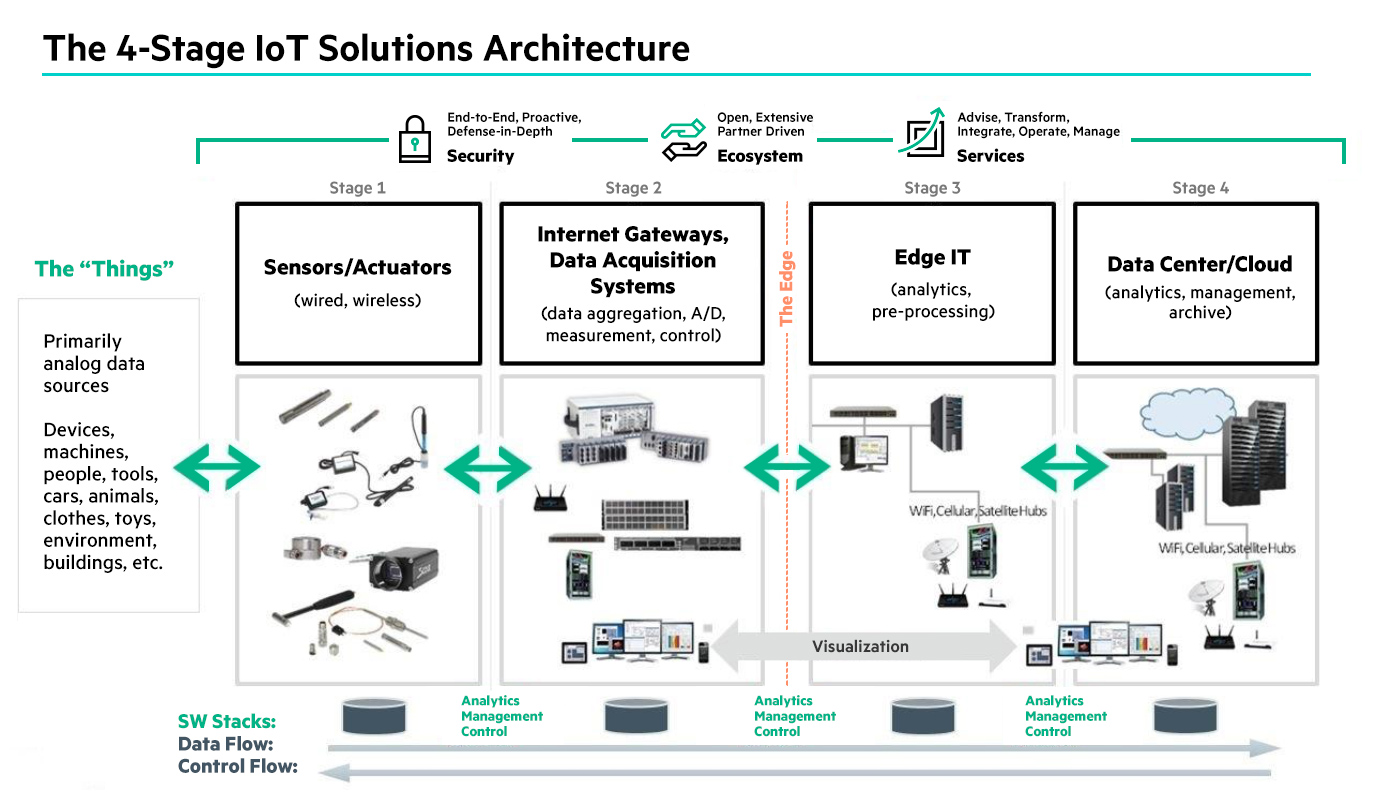The Intelligent Edge: What it is, what it’s not, and why it’s useful
What is Intelligent Edge?
The 7 reasons to compute at the intelligent edge
Although all three Cs (connect, compute, and control) contribute to edge intelligence, compute improvements are especially important because they can yield immediate insights from edge data at relatively low cost. Edge compute can be improved by shifting enterprise-class compute, storage, and management from the data center out to the edge. Organizations can leverage compute at the edge to:
1. Minimize latency
There are many applications that require immediate insight and control. For some mission-critical functions, compute must take place at the edge because any latency is intolerable. Consider a robot arm in a shop process that requires precision adjustments and calibration to maintain product quality. If the factory is churning out 50 products per minute, it’s important the calibrations be done in real time to minimize defects.
2. Reduce bandwidth
Sending big data back and forth from things to the cloud can consume enormous bandwidth. Future edge computing is the easiest solution to this problem.
3. Lower cost
Even if bandwidth is available, it can be costly. Efficiency is an important element of any corporate IoT strategy.
4. Reduce threats
When you transfer data across the campus, state, country, or ocean, it is simply more prone to attacks and breaches. Processing data at the edge can reduce security vulnerabilities. More about the Three Types of Security in IoT
5. Avoid duplication
If all the data is collected and sent to the cloud, there will likely be some equipment duplication in memory, storage, networking equipment, and software. If this duplication is not needed, then the associated increases in capital and operating expenditures are unwarranted.
6. Improve reliability
Even without any nefarious activity from hackers, data can be corrupted on its own. Retries, drops, and missed connections will plague edge-to-data-center communications. Even today, cell phone calls can be broken up or dropped.
7. Maintain compliance
Laws and corporate policies govern the remote transfer of data. For example, certain countries forbid companies from moving the personal data of their citizens outside their borders.

Getting started with intelligent IoT
Once the value of exploiting the action and insights at the edge is understood, it’s important to shift the focus to quantifying the return on investment (ROI) of a specific edge deployment. This can be done by initiating a formal and controlled IoT proof-of-concept project that will help alleviate concerns about working with unfamiliar, emerging technology as well as security issues around protecting the network and data. For businesses, ROI usually translates to improved financial performance due to lower operational expenses, deeper customer insights for up-selling, or increased production. In scientific and engineering enterprises, ROI can be associated with accelerating innovation and human progress.
Start by identifying a focused business, engineering, or scientific benefit to be derived from the project. Assess how it will impact your enterprise when successful. Connect a few things, such as corporate assets or products.
Analyze or compute the data from these newly connected things, and assess whether the insights you expected are revealed. Control your things to improve their operation or help adjust your business processes by shifting inventory, adding personnel, or re-pricing products. If the small project looks promising, scale up slowly with more connected things and additional data capture, and reassess the value as you go along.
You also need to promote OT and IT convergence and cooperation. Engineering and OT professionals must consider how to work side by side with IT professionals. IT professionals must consider reciprocating. For example, OT executives might add a senior engineer from IT to the IoT deployment team. This kind of cooperation is crucial because successful, end-to-end IoT solutions must integrate OT sensors, actuation, data and control systems, and acquisition systems with IT compute, storage, and networking.
Predicting the future
Much of the Intelligent Edge and IoT experience is based on its perpetual connectivity to things, people, and the environment. This in turn will produce growing volumes and varieties of edge data. If you like big data, you’ll love the Intelligent Edge and the IoT. The data sources at the edge are older because they are predominately natural data that originated with the universe, such as light, sound, radio waves, location, time, pressure, and velocity. They are also captured at higher speeds and will be bigger than all other types of big data combined.

Because large and diverse data sets improve the statistical accuracy of predictions and conclusions, we can expect more reliable medical prognoses, clarity on when equipment failures will happen, and precision on what people will buy, who will win elections, and where people will go on vacations.
In the future, we’ll be able to predict the future more accurately. If data scientists can monitor your behavioral and consumption patterns along with your blogs, comments, posts, and tweets, they can start to predict what you’re going to do next. Growing and increasingly diverse data sets will make their jobs easier.
The Intelligent Edge is an exciting place. Organizations that have rolled out IoT projects have seen returns in the form of cost savings, efficiency improvements, and higher customer satisfaction scores. If you haven’t mapped out your IoT strategy, it’s time to start thinking about how your organization might benefit from the Intelligent Edge.
Originally this article was published here.
Tom Bradicich is Vice President and General Manager at Hewlett Packard Enterprise (HPE), leading the global business unit dense scalable servers and IoT Systems and Software, with P&L, worldwide product development, and customer experience ownership. He directs the HPE Discovery Labs and IoT Innovation Labs in the US, Europe, and Asia, for partner and customer collaborations. HPE Edgeline Converged Edge Systems is powered by Intel® Xeon®.
is Vice President and General Manager at Hewlett Packard Enterprise (HPE), leading the global business unit dense scalable servers and IoT Systems and Software, with P&L, worldwide product development, and customer experience ownership. He directs the HPE Discovery Labs and IoT Innovation Labs in the US, Europe, and Asia, for partner and customer collaborations. HPE Edgeline Converged Edge Systems is powered by Intel® Xeon®.



